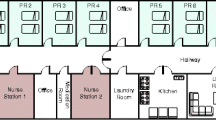Abstract
This paper describes a coordination model for collaborative work. The model called “Coordinated Work Environment”, utilizes an assembly of several organization units with specific goals and structure, populated by actors, work practices, and artifacts. Coordination work is defined by interdependencies existing in work practices, which can be prerequisite, simultaneous, or by means of sharing of resources. Coordination between communities of practice is established through interactions between them by using artifacts from object worlds. Interactions are of different kinds: interactions for action, possibilities, clarification, and orientation. The paper is based both on several ethnographic studies carried out in radiology departments in Austria, Denmark, and Sweden, and on analysis and assessment of computer systems (picture archiving and communication systems, radiology, and hospital information systems) and artifacts used to support communication, coordination, and collaboration in radiographic health care. It describes the elements of a coordinated work environment in detail by illustrating some practical examples from radiology work.
Similar content being viewed by others
References
L. Bannon and S. Bødker. Constructing common information spaces. In Proceedings of the Fifth European Conference on Computer Supported Cooperative Work, pp. 81–96, 1997.
W. E. Bijker. Of Bicycles, Bakelites, and Bulbs: Toward a Theory of Sociotechnical Change. MIT Press, Cambridge, 1995.
M. H. Brackett. Data Sharing. Using a Common Data Architecture. John Wiley & Sons, Inc., New York, 1988.
L. L. Bucciarelli. Engineering design process. In F. A. Dubinskas, ed., Making Time. Ethnographies of High-Technology Organizations, 92–122, Temple University Press, Philedelphia, 1988.
B. Jordan. Ethnographic workplace studies and CSCW. In D. Shapiro et al., eds., The Design of Computer Supported Cooperative Work and Groupware Systems (Human Factors in Information Technology, Vol. 12), Elsevier, Amsterdam, 1995.
N. Lundberg and H. Tellio?lu. Understanding complex coordination processes in health care. Scandinavian Journal of Information Systems, 11:1, 2000.
N. Lundberg and H. Tellio?lu. Impacts of the re-engineering process on radiological work. A comparative study between traditional/non PACS based and networked/PACS based radiology departments in Austria, Sweden, and Denmark. In C. Bartolozzi and D. Caramella, eds., Proceedings of the 15th International EuroPACS Meeting, pp. 251–255, Pisa, September 25-27, 1997.
T. W. Malone and K. Crowston. What is coordination theory and how can it help design cooperative work systems? CSCW'90 Proceedings, pp. 357–370, 1990.
H. Tellio?lu. Using electronic document repositories (EDRs) for collaboration. A first definition of EDR and technical implementation. In Proceedings of the 4th International Conference on Network Entities “NETIES98: Networking for the Millennium,” Leeds, pp. 117–121, UK, October 15-16, 1998.
H. Tellio?lu. CSCW issues of PACS-RIS-HIS building an electronic document repository. In J. Piqueras, J.-C. Carreno, eds., Proceedings of the 16th International EuroPACS Meeting, pp. 237–240, Barcelona, Spain, October 1-3, 1998.
C. Wild, W. Peissl, and H. Tellio?lu. An assessment of picture archiving and communication systems (PACS). The case study of the SMZO project. International Journal of Technology Assessment in Health Care, 14(3):573–582, 1998.
T. Winograd. A language/action perspective on the design of cooperative work. Human-Computer Interaction, 3(1):3–30, 1987-1988.
Author information
Authors and Affiliations
Rights and permissions
About this article
Cite this article
Tellioğlu, H. Modeling Coordinated Work: Definition and Application of the Model “Coordinated Work Environment”. The Journal of Supercomputing 24, 161–171 (2003). https://doi.org/10.1023/A:1021750826139
Issue Date:
DOI: https://doi.org/10.1023/A:1021750826139




